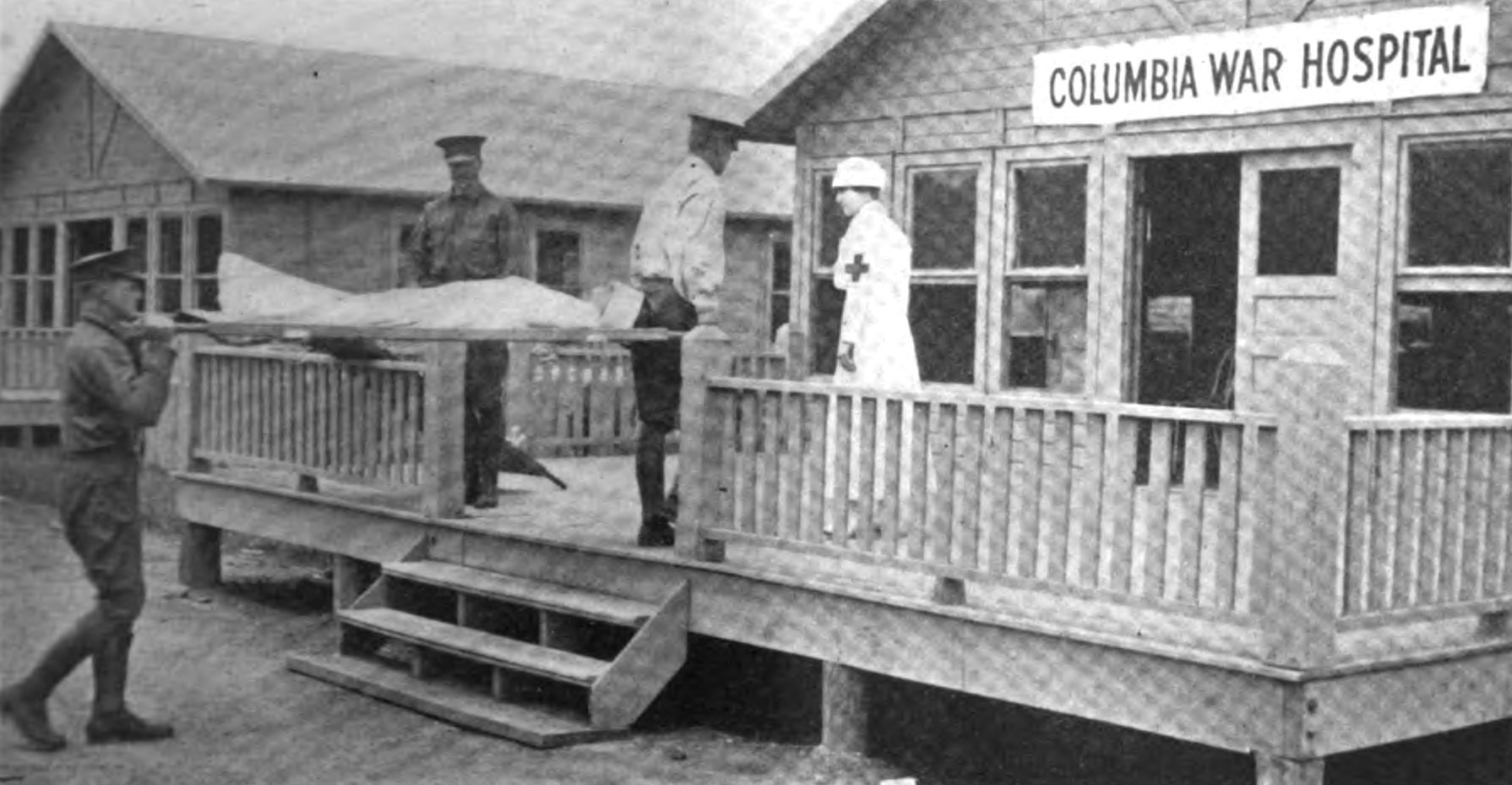Ask Alma's Owl: Over Here, Columbia Mobilized for World War I

Dear Alma,
The centennial of U.S. entry into World War I was in April, I understand Columbia had a role in training troops. Can you tell me more?
—Military Enthusiast
Dear Military Enthusiast,
One hundred springs ago, when the United States entered the Great War, Columbia University had already begun preparing. Columbia President Nicholas Murray Butler, a staunch anti-interventionist, was also deeply committed to national service. He had put Columbia on a war footing even before Congress made its declaration on April 6, 1917.
The Columbia Reserve Officers Training Corps had been formed on March 8, and all students over the age of 18 who passed a physical exam were enlisted to prepare for war service. Within four months, 1,400 students enrolled in what became known as the Columbia Battalion, complete with uniforms, military exercises and morning reveille. A Student Army Training Corps was set up in Hartley and Livingston (now Wallach) halls, and a rifle range between Philosophy and Kent halls rang with the sound of bullets.
Columbia was one of 12 universities designated by the War Department to create a naval section of the Student Army Training Corps. More than 300 students went through the program and were deployed as naval officers. The Navy also set up a gas engine school on the Morningside campus to give the service’s engine-room personnel a crash course on a new class of vessels.
There was no Air Force; anything that involved flying was under the auspices of the U.S. Army, which set up an air service radio school in Earl Hall, where cadets were trained to repair wireless communications for the Army’s biplanes. Three Curtiss fighter planes without motors stood behind Schermerhorn Hall for the students to work on.
A new U.S. Signal Corps school of military cinematography drew professional photographers and film artists who would document the fighting and provide footage to be used to boost morale among soldiers and the U.S. public. Columbia offered projection rooms and lab and classroom space in Kent and Havemeyer halls. The effort was commanded by a silent-film cameraman, Victor Fleming, who in 1939 directed both Gone with the Wind and The Wizard of Oz.
So many Columbians enlisted in the armed services—some 2,600 students, alumni, staff and faculty served—that up to a third of the class of 1918 was at the front during Commencement. The Engineering School dean handed a degree to the sole graduate who attended that school’s ceremony.
Columbia’s war efforts went beyond Morningside Heights. Soon after the war started, Columbia medical personnel worked with Presbyterian Hospital to establish the Columbia War Hospital, the first American base hospital. Its Bronx site had the benefit of being outside the range of any bombardment on Manhattan. It was later renamed the U.S. Army General Hospital No. 1, and between August 1917 and October 1919 it cared for 32,000 military members.
Many Columbia nurses were already overseas. Forty-nine graduates of the School of Nursing had volunteered to serve as early as 1915, some driving ambulances near the front lines. In 1918 a large number of Columbia doctors and nurses deployed to the Normandy region of France. Some of them served in a mobile unit, a specially equipped convoy of automobiles that functioned as a rolling surgical hospital because field hospitals were often too far from the front lines to provide effective care.
In all, some 400 members of the Columbia community perished in the Great War. They are commemorated on the University’s Roll of Honor website and by a plaque in Butler Library.
One of the most lasting legacies of the Great War years at Columbia is familiar to all undergraduates: the Core Curriculum. In 1917, the U.S. Army commissioned Columbia faculty to create “War Issues,” a course for the Student Army Training Corps. In response, a “peace issues” course was conceived in 1919 -- “Introduction to Contemporary Civilization in the West.”
It was later joined by a humanities sequence, which became “Literature Humanities,” “Art Humanities” and “Music Humanities.” Along with a science course introduced in 2004, these five courses became the Core Curriculum that today is the cornerstone of a Columbia undergraduate education.
Send your questions for Alma’s Owl to [email protected].
Columbia’s role in WWI was the topic of a March conference hosted by the Lehman Center for American History. Columbia’s Maison Française website highlights the relationship between the University and France. All slideshow images are courtesy of Maison Française and Lehman Center.